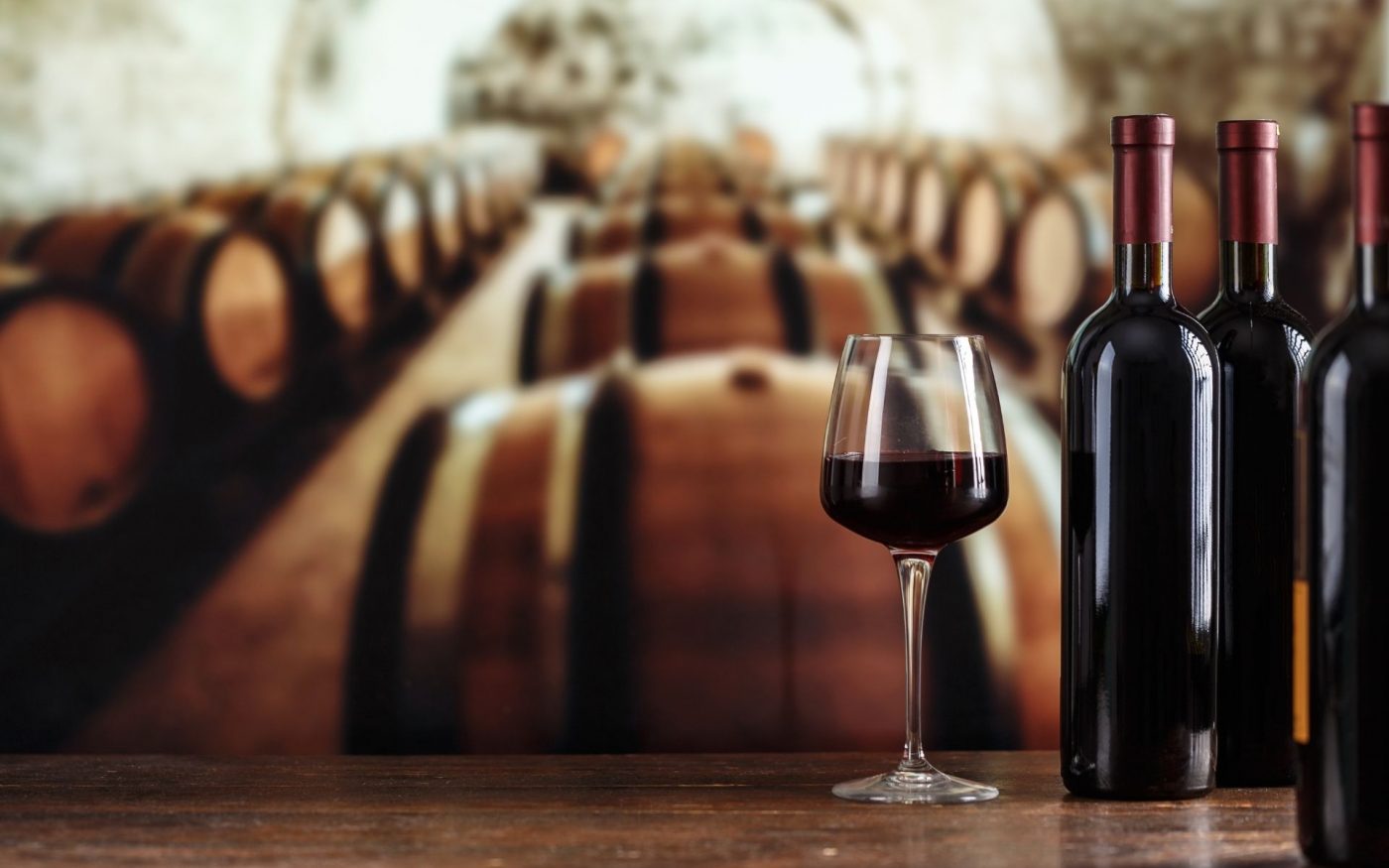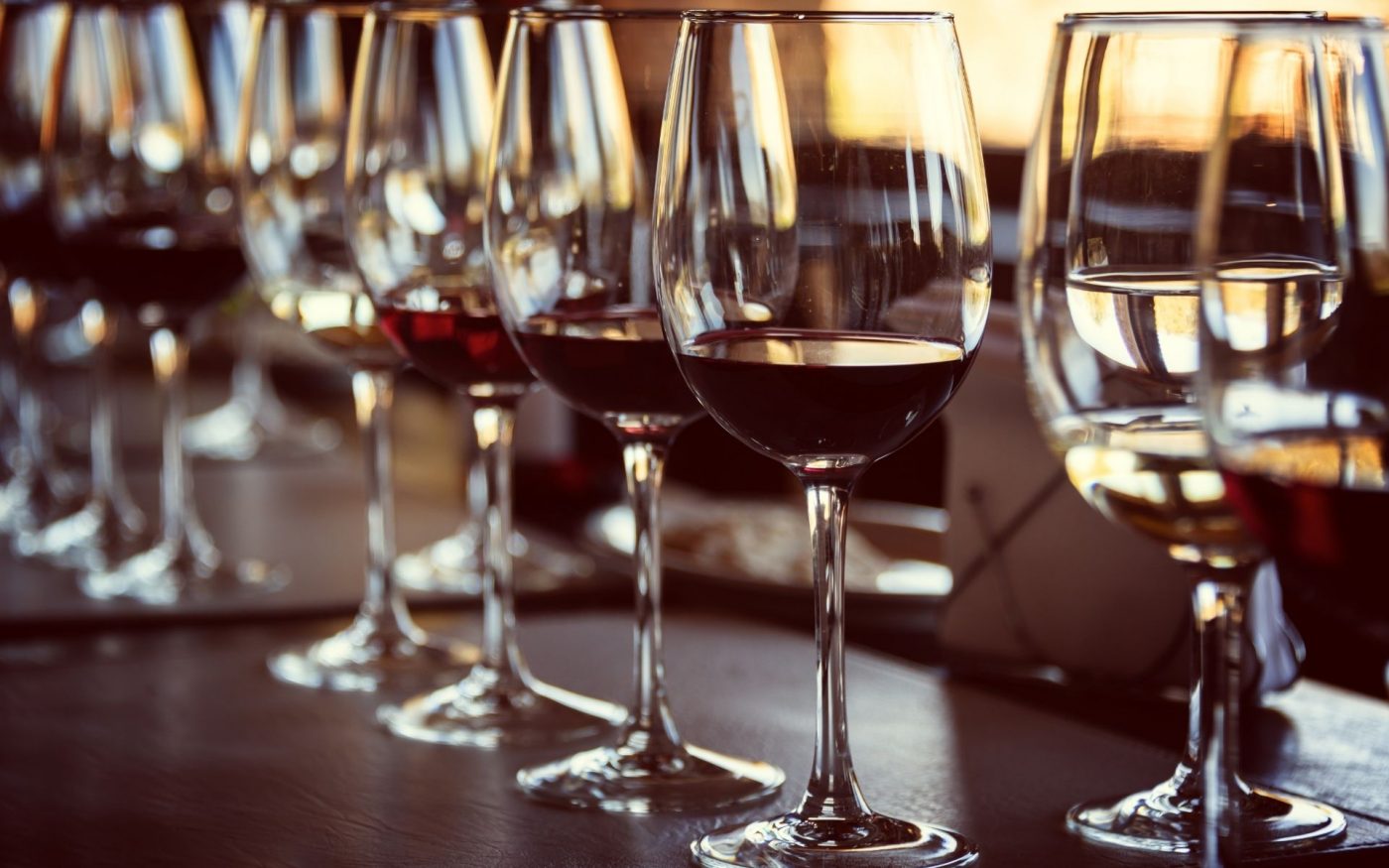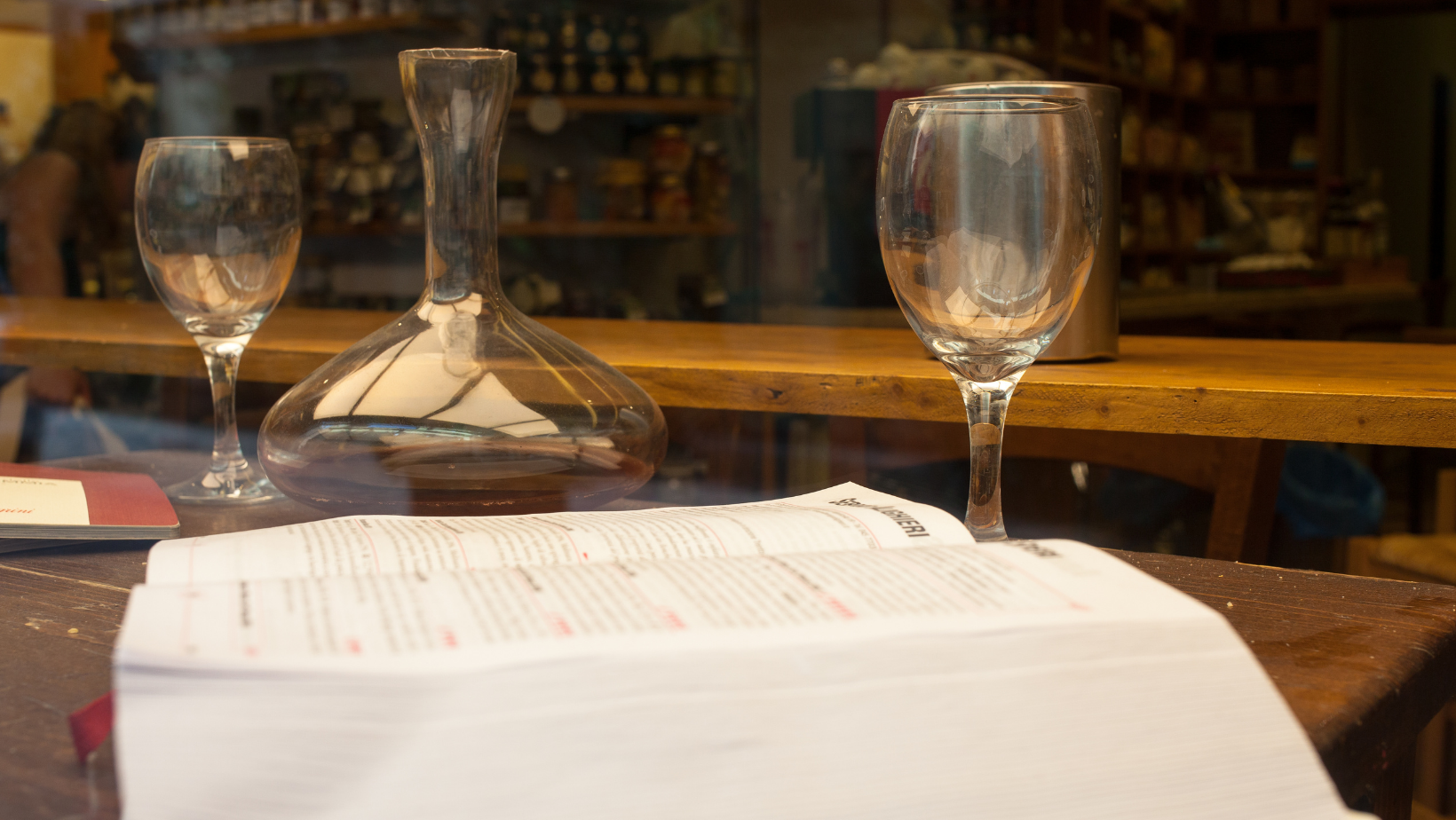Whether you are a novice or connoisseur, it is always fun to go through wine glossaries and check your knowledge, especially before visiting.
Although many winemakers speak English very well, some Italian and Piemontese dialect always seems to slip out.
In the vineyard
The uva is picked from the vite in the vigna or vigneto during the vendemmia. All these V words!
- Uva – Grape
- Vite – Vine
- Vigna/Vigneto – Vineyard
- Vendemmia – Harvest
Firm & Municipality
Perhaps because the “home” is so important to Italians, you can find lots of different names for wineries, farms, and estates too.
Azienda Agricola – often precedes the family winery name (ex. Azienda Agricola G.D. Vajra) which means it is a farming business. Just the word azienda means company or firm.
- Azienda Vitivinicole – A farming wine business.
- Ca’ – Short for casa (home) often used for winery names. (ex. Ca’ Neuva)
- Tenuta – A large estate or holding (ex. Tenuta Carretta)
- Cascina – Farm house (ex. Cascina Gramolere)
- Podere – Small estate or farm (ex. Podere Luigi Einaudi)
These are all located in different COMUNEs and then more specifically in FRAZIONEs and furthermore, perhaps even in a small BORGATA.
- Comune – Municipality and may include different small villages.
- Frazione – A small part of a municipality like a hamlet
- Borgata – An even smaller part or sub-hamlet of a municipality or hamlet
In the cellar
You can decide to taste wines in many different locations including the CANTINA, ENOTECA, or ENOTECA COMUNALE.
- Cantina – winery or cellar
- Enoteca – wine bar or wine shop
- Enoteca Comunale – a wine shop pertaining to one village’s producers where you can usually taste a sample of a few wines every day.
Would you like a winery tour or just a DEGUSTAZIONE? Degustazione – tasting
Soil & Dialect
And if you hear these strange sounding words in conversation when talking about the vineyards during your tasting, now you’ll know what they mean!
- Sori’ – Piemontese dialect for the part of the hillside where the snow melts first, meaning full southern exposure and therefore the best place for Nebbiolo vines.
- Bricco / Bric – A vineyard’s highest point or crag. Thought to be the superior place for vines.
- Cru – Coming from the French wine term for “growth”. In Italy it is a named vineyard area normally known for its recognized quality although with no official rankings. Often you can find the name on single-vineyard bottlings which exhibit superior characteristics of this cru.
Now that we are getting down to the nitty gritty, what about the soils of Langhe? Any time you talk to a winemaker here, they will undoubtedly talk about the soils and the terroir.
Generally speaking the Langhe area is made up of ARGILLA, MARNE and SABBIA.
- Argilla – Clay
- Marne – Marls
- Sabbia – Sand
The marls are a mix of clay and calcium carbonate. When we look closer at the soils, one will find more blue-gray marls with calcareous clay called FOSSILI DI SANT’AGATHA which can be found in La Morra and Verduno giving very perfumed and elegant characteristics to the wine. In the other villages that produce Barolo like Serralunga and Monforte d’Alba, one can find siltier marls with more sandstone which are almost white and yellowish in color, tending to give the wines more structure.
Technical terms
Got that?
More technical stuff…
DOC – (Denominazione di Origine Controllata) The equivalent to the French’s A.O.C., it is an assurance of quality. Although they are strictly governed, these are still more common to find than DOCG since these are more strictly controlled by an official tasting commission.
It is not worth mentioning IGT/IGP (Indicazione Geografica Tipica/Protetta ) because Piemonte doesn’t have any of these more flexible designations!
Once you get into a CANTINA, you may see all kinds of barrels like more traditional BOTTI and TINI, medium sized TONNEAUX or French BARRIQUES.
- Botti – Large Slavonian oak barrels normally ranging from 10 hectoliters to 100.
- Tino – Large conical wooden vat used for fermentation.
- Tonneaux – 500 Liter oak barrel
- Barrique – 225 liter French oak barrel although you can find some coming from Austria and the USA.
Fizzy wine
As you make your way to the tasting room, you might even find sparkling wines to start off your tasting of the big reds.
- Metodo Classico – Bottle-fermented sparkling wine made in the Champagne method. Many producers are now making high quality bubbles made from grapes like Pinot Noir, Chardonnay and even Nebbiolo.
- Spumante – a general term in Italian for sparkling wines which are often of a superior category made with a Bar pressure over 3 Bars at 20°C.
So what if I see VINO FRIZZANTE, MOSSO, or VIVACE? Is that the same thing?
No. It is mostly a question of legal categories and production methods. After Spumante would come the category of FRIZZANTE (which is sometimes called MOSSO although it is not a legal category) and must be made with a pressure between 1.5 to 3 Bars at 20°C. VIVACE would be made at a pressure under 1.5 Bars at 20°C. Often you hear every day wines like Freisa and Bonarda described as VIVACE. Literally these terms mean:
- Frizzante – fizzy
- Mosso – wavy
- Vivace – lively
Tasting
If you are really lucky you might be able to taste some RISERVAs. So what is the difference between a normal ANNATA wine and a RISERVA?
- Annata – vintage
- Riserva – obviously means reserve! In Italy this must be aged longer than the minimum requirement. For Barolo this means a minimum of 5 years of total ageing instead of 4.
photo by Umberto Fistarol
While tasting, Italians love to use these terms to describe Piemontese wines. One wine may be considered more FEMMINILE and therefore ELEGANTE while some Barolos may be described as structured, austere and MASCHILE. Barbaresco and Barolo is often attributed to BALSAMICO and floral notes like roses. You can also get GOUDRON, CUOIO or ETEREO notes especially in aged wines. Hopefully you won’t hear “TAPPO”!
- Femminile – Normally wines from the Tortonian soils of La Morra and Verduno are described as being more feminine for their perfumes and refined wines.
- Elegante – Perhaps polished, quality, pure, clean, NOT in your face wines.
- Maschile – Traditionally thought of as coming from Helvation soils like those in Serralunga d’Alba and Monforte d’Alba, giving more austere, tannic, structured wines.
- Balsamico – This does not mean “vinegary” but more like Vicks menthol, minty types of fragrances.
- Goudron – Tar aromas unique to Barolo and Barbaresco
- Cuoio – Leathery aromas usually found in aged wines
- Etereo – Literally “ethereal”. Perfumes coming from ageing which often smell like nail polish, wax, soap
- Tappo – cork… meaning a corked wine!
And finally…CIN CIN – cheers!
Crediti Foto: Umberto Fistarol
Anna Savino
Transplanted from Napa, California to Piemonte Italy over 9 years ago, Anna Savino blogs for a passion about food, wine, and Italian culture. Discovering Piemonte is an endless journey and she does it one step (sip) at a time.
She loves to share the beauty and wonders of the region by collaborating with a top Barolo winery where she does PR, tours and tastings. Thanks to her passion for this area, she was able to make her dreams come true by starting her own custom wine & food tour company Italianna where she provides tourists with an authentic experience in Langhe. Check out her blog for an insider's look at Piemonte!
- - -
Trapiantata da Napa, California, in Piemonte, Italia più di 9 anni fa, Anna Savino ha deciso di iniziare a scrivere un blog per via della sua passione per il cibo, per il vino e per la cultura Italiana. La scoperta del piemonte è un viaggio infinito e lei lo sta facendo un passo (un sorso) alla volta.
Ama condividere la bellezza e le meraviglie della regione collaborando con una delle più importanti cantine del Barolo, dove si occupa di PR, visite e degustazioni. Grazie alla sua passione per quest'area, è stata capace di far diventare il suo sogno una realtà fondando la sua azienda di tour enogastronomici personalizzati "Italianna", con cui aiuta i turisti a vivere un'autentica esperienza Langarola. Visita il suo blog per dare al Piemonte un'occhiata da insider!
Posts by Anna
|
Google+
|
Twitter
|
Facebook
|




